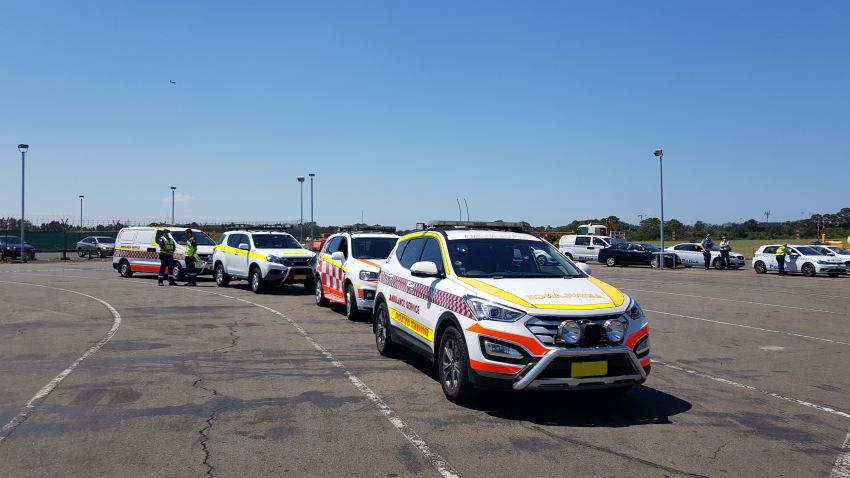Emergency exercises at airports can be a daunting task of stakeholder engagement, logistics, and most importantly resource management. This is especially the case at regional airports where operations, particularly in a COVID-19 world, are at a minimum with key airport staff often forced to wear many different hats in the operating environment.
Legislative requirements
The key legislative instruments that outline emergency planning requirements at Australian airports are set by the Civil Aviation Safety Regulations (CASR) and the Manual of Standards (MOS) Part 139. Each state or territory within Australia has their own emergency/disaster management legislation describing planning and preparedness requirements. These include a framework for the establishment of emergency committees which assess the hazards of their respective communities, which in turn, includes airports.
The legislative requirements for emergency planning and preparedness have not been eased while COVID-19 has ravaged the aviation industry. The reduction in staffing levels brought on by the economic downturn now means that some airports must continue to meet the regulatory requirements while being less resourced to do so. In some cases, this may result in an imbalance in capacity. If operational demand suddenly increases during an emergency, airports may struggle to meet the required capability.
Airport staff expertise and its importance in emergency response
Australian State/Territory legislation outlines the roles of specific agencies and organisations in terms of command, control, and coordination of an emergency. These agencies must be supported by airport staff to ensure safety of the response on an airport.
The expertise of airport staff is crucial to effective response and successful recovery from emergencies situations at airports. Where resourcing is low, key staff including the Airport Manager and Airfield Reporting Officers must prioritize their time and expertise across multiple roles during an emergency. The operational knowledge and relationships they have with other airport stakeholders including aircraft operators, ground handling agents, security officers, and commercial tenants, can be crucial in ensuring the right information reaches emergency services to achieve an effective response.
The control of access to a site can be one of the most crucial first actions during an emergency, particularly when response must occur on the airfield. Responding agencies may not have a detailed understanding of characteristics of the airfield. The expertise of airport staff to facilitate escorting or wayfinding is critical in ensuring the resilience of continued airfield operations (if any) and the safety of the airport community.
Realistic Exercising
A mutual understanding of different agency/organisation’s roles and responsibilities is essential to an effective emergency response and recovery. Agencies require airport staff support to fulfill their response duties and the airports require the expertise of agencies to both respond, and later, to return the airport to safe operation.
The regulations require at a minimum a biannual full-scale exercise, and a desktop exercise every intervening year for Australian airports operating with:
- scheduled international operations; or
- greater than 50 000 annual passenger movements; or
- greater than 100 000 annual aircraft movements
Airports with operations smaller than stated above are required to complete a review of emergency procedures in conjunction with local emergency responders every 2 years.
Where airport staff resourcing is limited, as is discussed above, the testing of low resourcing scenarios in the emergency exercise can be the first option for realistic exercising of airport operations. This scenario will allow staff to explore the challenges and decisions that would be required in such an environment.
If the airport is in a position to be able to take advantage of a full-scale exercise and expose as many staff members in decision-making roles as possible, an external facilitator can be introduced and a shadowing program can be established.
An external facilitator can take responsibility of the resource intensive activities such as planning documentation, exercise evaluation, and exercise facilitation to allow key staff to participate and focus on their roles during an emergency. A shadowing program, where off duty or supporting staff can participate and support the key players in the exercise scenario, can allow for a realistic test of a low resourced emergency. It will also ensure that as many staff as possible can be upskilled and confident with the emergency procedures in place and establish their own relationships with responding agencies.
About To70. To70 is one of the world’s leading aviation consultancies, founded in the Netherlands with offices in Europe, Australia, Asia, and Latin America. To70 believes that society’s growing demand for transport and mobility can be met in a safe, efficient, environmentally friendly and economically viable manner. To achieve this, policy and business decisions have to be based on objective information. With our diverse team of specialists and generalists to70 provides pragmatic solutions and expert advice, based on high-quality data-driven analyses. For more information, please refer to www.to70.com.

